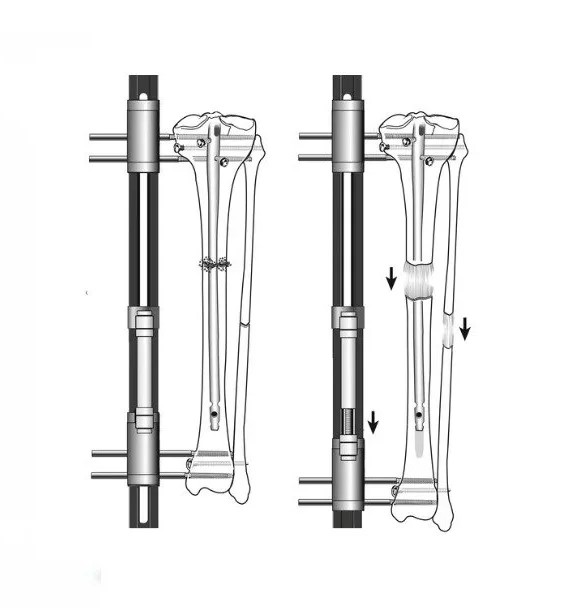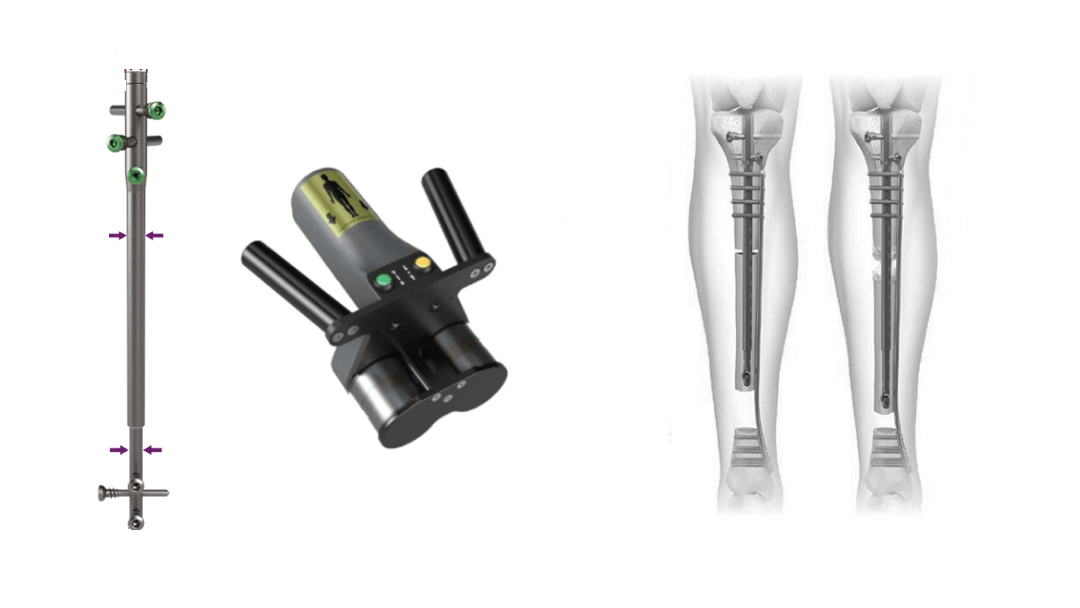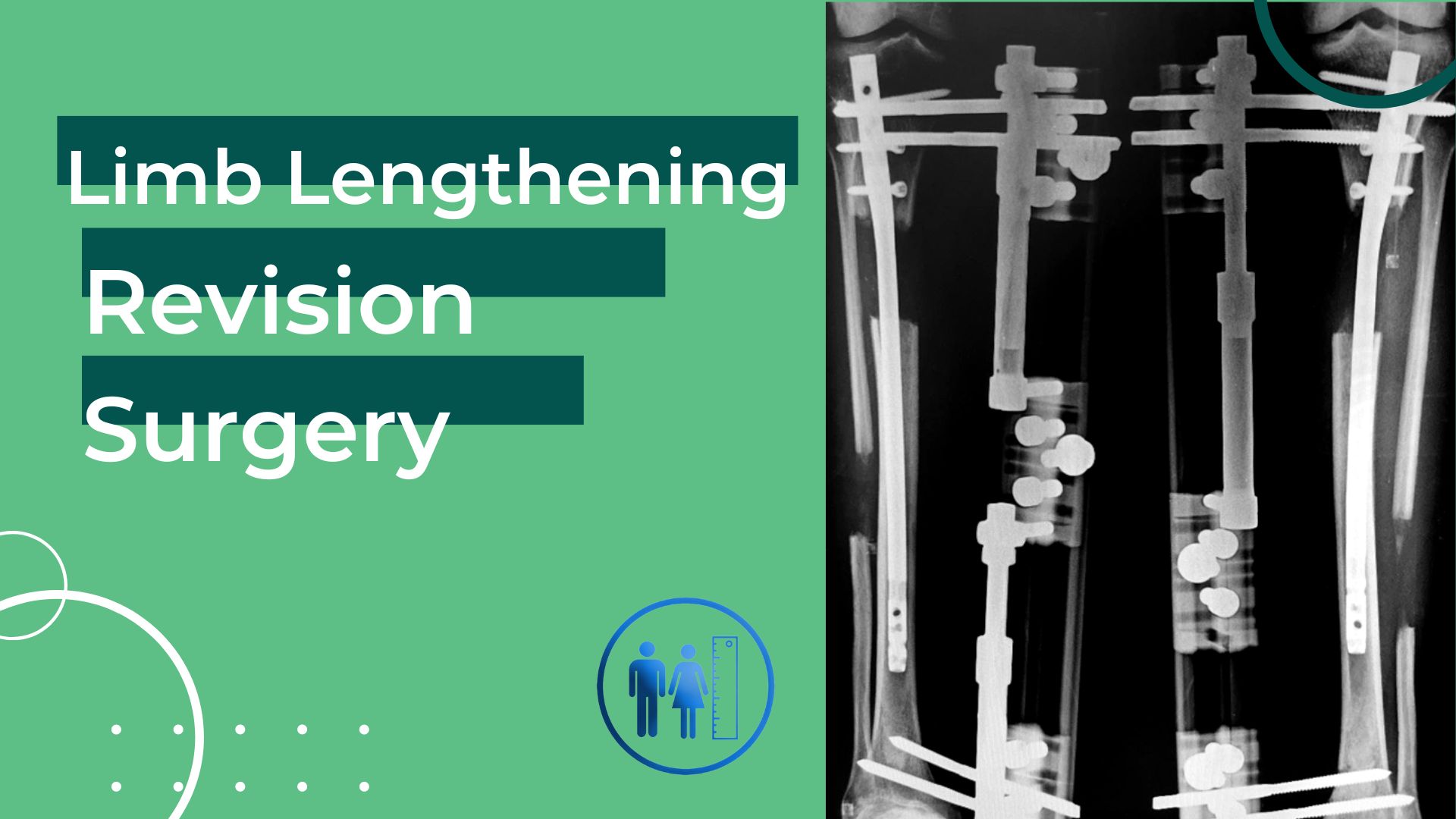
Live
Support AI
What is the difference between Combined and Precice 2?
In today's medical field, lengthening surgeries offer new and effective methods with technological developments. The two most common methods in this area are Combined/Lon (Lengthening Over Nails) and Precice 2. Both methods use different techniques to enable individuals to achieve their goals of increasing their height. While the LON method uses both internal (intramedullary nail) and external (external fixator) devices together, Precice 2 works with a completely internal system. In this article, we will examine in detail the key features, advantages, and disadvantages of the LON and Precice 2 methods. If you are thinking of having lengthening surgery and are doing research on methods at this point, we recommend that you review our other articles on our website. Although lengthening surgery has been widely performed especially in the last few years, it is very important for individuals who are considering surgery to consider all possible situations. This is a serious surgical operation and the recovery process can be much longer and more difficult than other types of surgery. Therefore, it is very important to consult with a doctor who is a specialist in the field and to have the necessary checks and examinations about whether you are suitable for surgery.
What is the Combined/LON Method?
 The LON method is one of the existing methods used in leg lengthening surgeries. As the name suggests, in this method, both an intramedullary nail and an external fixator are used together. When an external fixator is used, the patient may have to compromise on comfort and aesthetics to some extent, since this device is attached to the skin from the outside and maintenance is more difficult. However, the LON method allows the leg length to be increased reliably. The most obvious reason why the LON method is preferred by patients is that it allows supported walking even if there is a fixator outside the leg. It is also a much more economical option compared to internal nails such as Precice. The application phase of the LON method can be summarized as follows;
The LON method is one of the existing methods used in leg lengthening surgeries. As the name suggests, in this method, both an intramedullary nail and an external fixator are used together. When an external fixator is used, the patient may have to compromise on comfort and aesthetics to some extent, since this device is attached to the skin from the outside and maintenance is more difficult. However, the LON method allows the leg length to be increased reliably. The most obvious reason why the LON method is preferred by patients is that it allows supported walking even if there is a fixator outside the leg. It is also a much more economical option compared to internal nails such as Precice. The application phase of the LON method can be summarized as follows;
- First, an osteotomy (bone cutting) is performed at the desired bone level in the leg.
- During the process of increasing bone length, the intramedullary nail is positioned inside the bone cavity to keep the bone segments stable, thus acting as an internal support.
- The external fixator used in the bone lengthening process is placed outside the skin and fixed to the bones and allows the process to be controlled.
- After the surgery, the bone is removed a certain distance (usually 1 millimeter) every day according to the device settings. The body fills this gap by creating new bone tissue, thus increasing leg length.
- Once the target leg length is reached, the lengthening process is terminated and the newly lengthened bones are given time to heal. During this consolidation (hardening) phase, patients usually gradually gain the ability to walk by putting their own weight on the external fixator.
- The fixator is removed 2.5-3 months after the surgery and walking with support continues for another 2-3 months. Walking without support begins 5-6 months after the date of surgery.
What is Precice 2?
 Precice 2 is a completely internal, high-tech extension device used in leg lengthening operations. The uniqueness of this system lies in the fact that the extension process can be controlled from the inside with a magnetic remote control, without any additional devices outside the skin. Due to the device used, the cost of this method is slightly more expensive than the LON method. The most obvious reason why patients prefer the Precice method is that there is no external fixator on the outside of the leg, unlike the LON method, and accordingly, the most critical period in terms of dressing and hygiene is the first 15 days. After 15 days after the surgery, the dressing of the patients is completed, which eliminates any problems that may arise in terms of hygiene. The use of Precice 2 can be summarized as follows;
Precice 2 is a completely internal, high-tech extension device used in leg lengthening operations. The uniqueness of this system lies in the fact that the extension process can be controlled from the inside with a magnetic remote control, without any additional devices outside the skin. Due to the device used, the cost of this method is slightly more expensive than the LON method. The most obvious reason why patients prefer the Precice method is that there is no external fixator on the outside of the leg, unlike the LON method, and accordingly, the most critical period in terms of dressing and hygiene is the first 15 days. After 15 days after the surgery, the dressing of the patients is completed, which eliminates any problems that may arise in terms of hygiene. The use of Precice 2 can be summarized as follows;
- While the patient is under general anesthesia, the Precice 2 nail is placed in the bone canal through a minimally invasive procedure performed in the bones (femur or tibia).
- The device contains an extension rod inside, which can be activated using a magnetic remote control, resulting in bone lengthening of approximately 1 millimeter each day.
- After waiting a few days after the surgery, daily bone lengthening begins under the supervision of the doctor. Each day, the bone is lengthened by approximately 1 millimeter until it reaches the desired length.
- When the desired length is reached, the lengthening process is terminated and the healing phase begins for the newly formed bone tissue to harden and mature. In this phase, the aim is for the bones to fully heal and become strong enough to support the patient's weight.
- After the healing of the bones is completed, the extension device (nail) can remain in the body or can be removed when necessary.
Combined/LON and Precice Comparison:
LON and Precice are actively used methods in lengthening surgeries. The difference between LON and Precice 2 is very curious by patients. You can review the differences between these two methods in our table below.
| Features | LON | Precice 2 |
| Walking during lengthening | Supported walking is possible | Walking not possible except for basic needs in first 2-3 months |
| Appearance | Fixator present | No fixator, internal device (internal nail + control) |
| Unassisted Walking | 5-6 months | 6-7 months |
| Pain | Pain related to fixator possible | Less pain observed compared to other methods |
| Full Recovery | 9-12 months | 9-12 months |
| Maximum Extension | Femur 6-8 / Tibia 5-7 | Femur 6-8 / Tibia 5-7 |
| Wound Care | Regular dressing | Wound closes after the first 2-3 weeks |
Patients considering leg lengthening surgery need to be well-informed about both LON and Precice 2 methods, as this is crucial for the decision-making process. Each method has its own set of advantages and disadvantages; therefore, making an informed decision is a key factor that directly affects the recovery process. Individuals who decide to undergo limb lengthening surgery should first complete their medical examinations successfully. At this stage, your doctor will require detailed blood tests, X-ray images, a general health check, and specific tests to measure your bone health, and will thoroughly inform you about all the processes of the surgery. If it is determined that you are suitable for the surgery, your preparation for the operation will then begin. It is important to remember that leg lengthening surgery is a serious operation, and each stage must be considered with utmost seriousness. In the video below, you can watch an interview with one of our patients who has experienced the surgery. Accessing more objective and accurate information through the experiences of patients will be very helpful in addressing your questions. For more patient interviews and informative videos about the surgery process, you can follow our YouTube channel, and for other inquiries, you can directly contact our patient representatives.
You will be informed about the lengthening increase, lengthening process, the prices of the surgical methods, the difference of the methods, the risks of the surgery.




